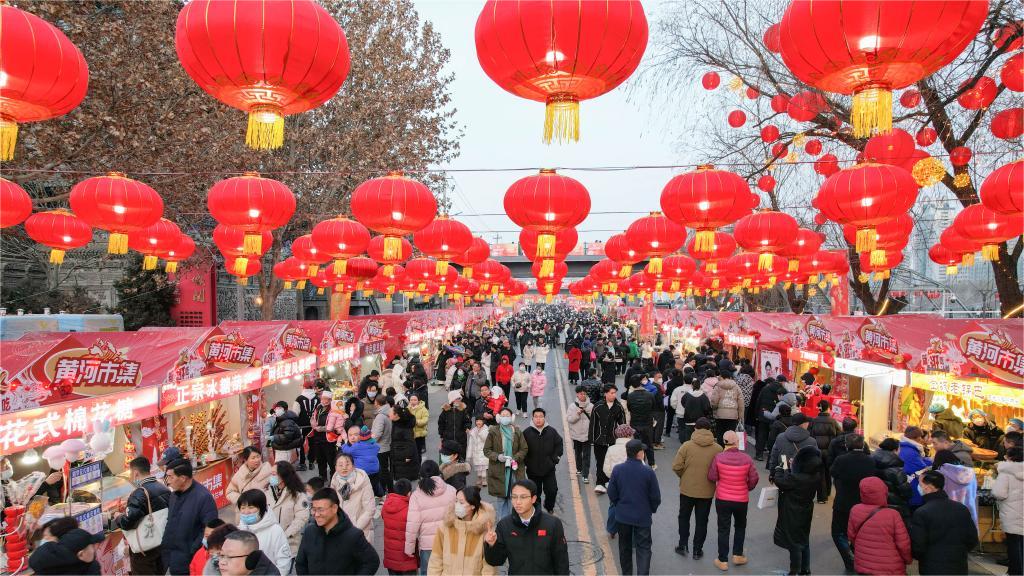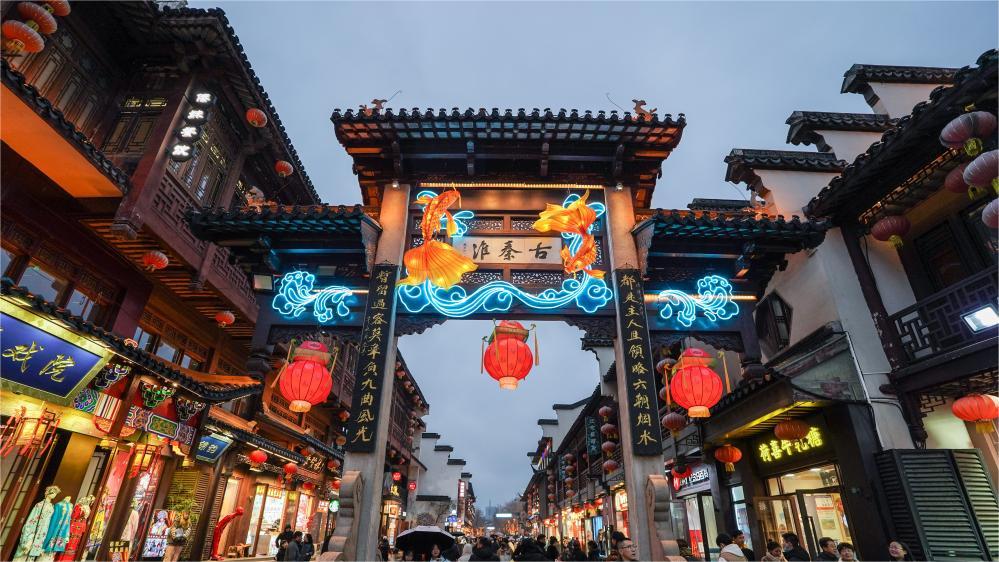When state firms try to give reality a utopian touch
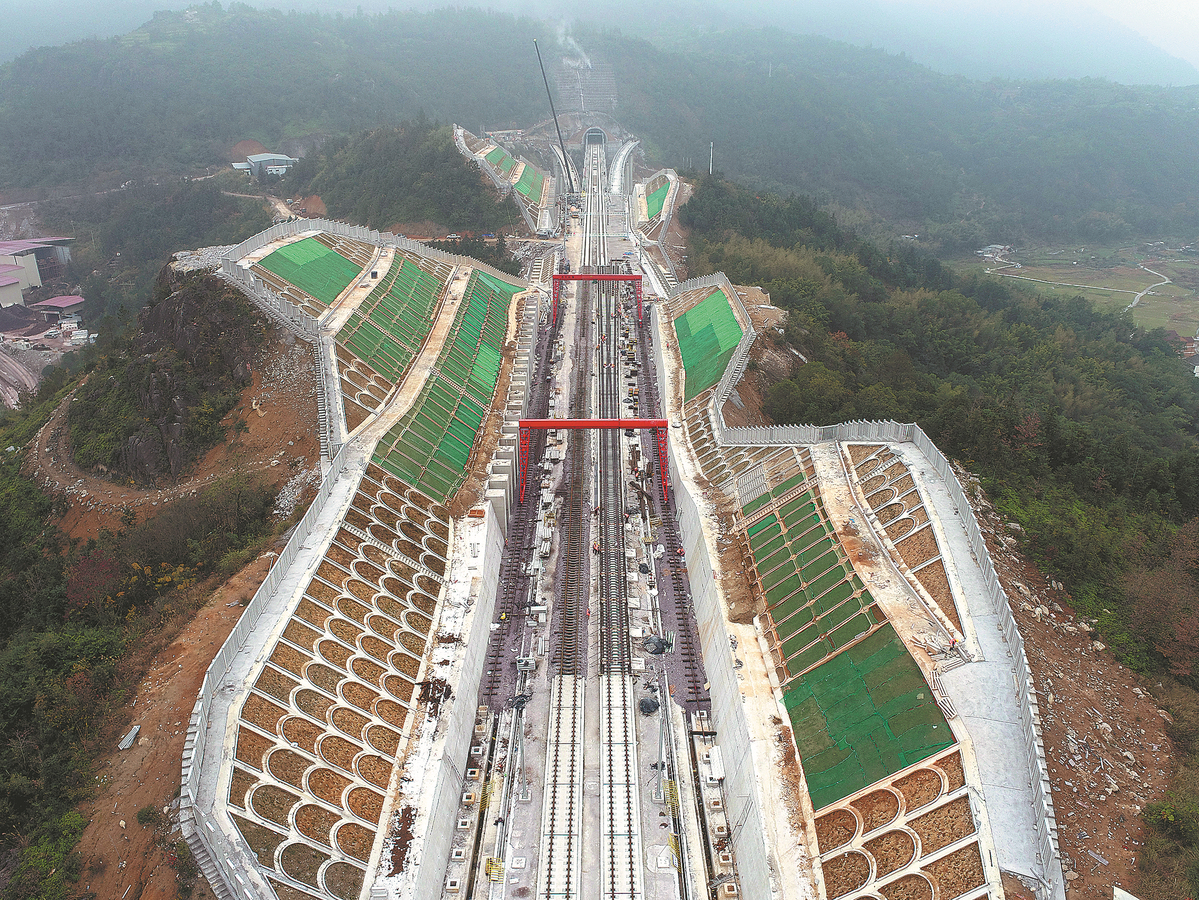
A drone image shows the construction site of the Hangzhou-Wenzhou High-speed Railway, a local HSR project built by State builders including China Railway 24th Bureau Group Corp. CHINA DAILY
Are China's state-owned enterprises drawing inspiration from Peach Blossom Spring - a fable spun by Tao Yuanming (365-427) of the Eastern Jin Dynasty (317-420) - to illustrate how modern industry can play a constructive role in community and nation building to create what might be called a 21st-century utopia? Such a question might not be inappropriate this Spring Festival holiday, given the enterprises' recent record.
Historically, Tao is known as China's most famous recluse. His fable painted astounding views of a broad, flat landscape with imposing houses, lush fields, lovely ponds, rich mulberry trees and sprawling bamboo gardens, all connected by paths extending among the fields in all directions. The imagery portrayed, it is said, impressed the fisherman who broke into Tao's Shangri-La by accident.
Most Chinese junior high school textbooks have enshrined Peach Blossom Spring, a nod to Tao's vision of utopia - a place without wars and filled with people's laughter and a harmonious and prosperous life.
Today's China, a land that has not waged or been embroiled in any war for decades, thanks to its emphasis on peace, diplomacy and development, resembles Tao's utopia. Led by the Chinese government and strengthened by SOEs in various fields, China might receive Tao's vote of approval.
Take Lanxi, a county-level city in Jinhua of Zhejiang province, for example. In early January, when a cold wave swept across major parts of China, Lanxi's farmers were worried lot. Concerns over food security rattled the local government and SOEs, triggering an immediate response from the local power supply unit of State Grid of China. The SOE made sure electricity supply to key local enterprises did not get disrupted by the extreme weather.
Junlian Ecological Agriculture Technology Co Ltd, a local mushroom grower, was among the beneficiaries. Chen Shaorong, owner of the firm, said mushroom cultivation in the greenhouses requires exacting temperature and humidity controls. Even slight variations could affect the quality of the produce.
Junlian deployed its staff members to ensure its power distribution equipment like electrical meters and insulation covers were all securely installed and functioned normally. It also promoted electrical safety awareness, helping its farmers to regulate temperature and irrigation.
"Thanks to State Grid, we had stable electricity supply. We have no more worries for the rest of the winter," Chen said.
Junlian went on to establish an efficient WeChat-based response mechanism for local enterprises that practise smart farming in greenhouses, providing them with an online channel to ask questions or seek repairs. Besides, it develops personalized power supply plans for clients based on the latter's demand and electrical load.
These moves help farmers successfully meet rising demand for fruits and vegetables around the Chinese Lunar New Year holiday period.
Li Guoxiang, a researcher at the Rural Development Institute, which is part of the Chinese Academy of Social Sciences, said China's food security, though at a pretty high level, still faces many challenges. When there is extreme weather or a natural disaster, timely measures must be taken to reduce damage to agriculture.
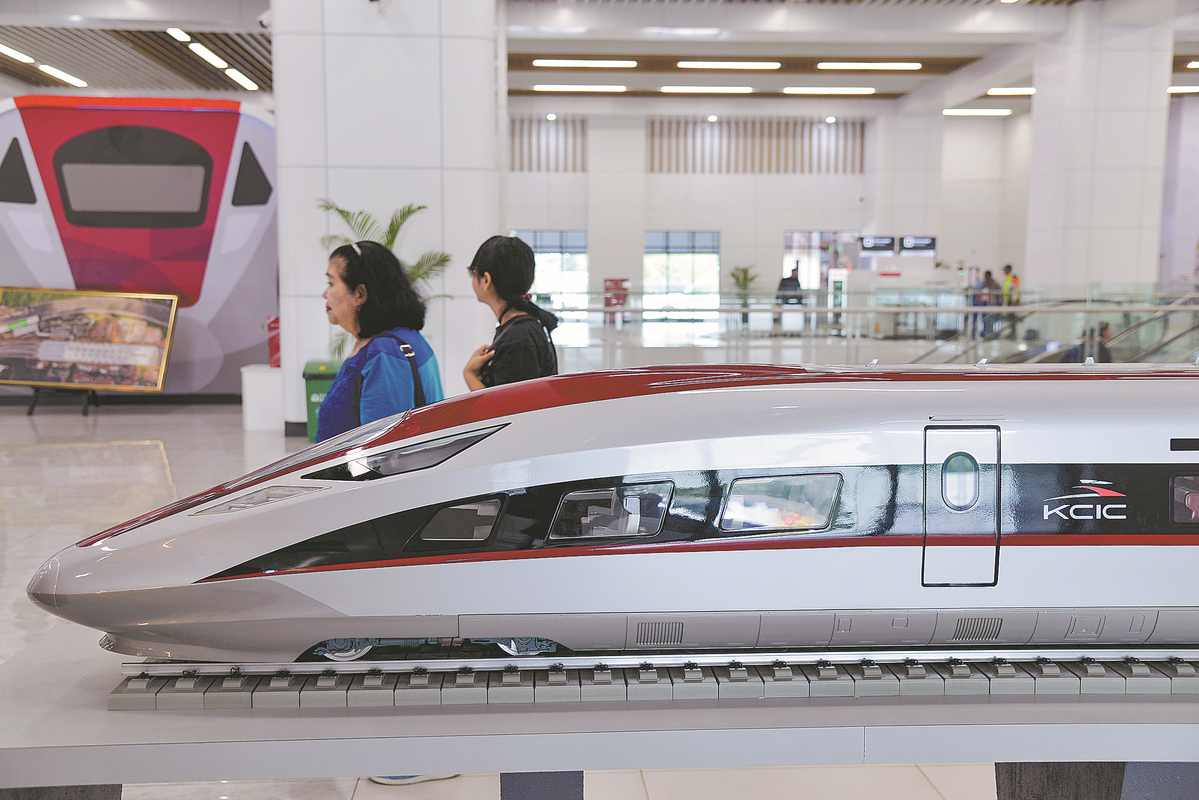
Passengers in Jakarta, Indonesia, walk past a model of high-speed trains used on the Jakarta-Bandung Railway. FANG ZHE/ XINHUA
Over the past few years, State Grid has been striving to provide stable power supply amid extreme weather and natural disasters, bringing benefits to China's agriculture, farmers and rural areas, as well as safeguarding the country's food security.
The Central Rural Work Conference in December recorded that China had overcome the adverse effect of some severe natural disasters in 2023, with food production hitting record highs and farmers'incomes growing at a faster pace -a glowing testimony to SOEs' contributions.
Central authorities doubled down on the ongoing infrastructure push to ensure the nation developed adequate capabilities to protect itself from natural phenomena.
In October, the nation's top legislature had approved the central government's plan to issue an additional 1 trillion yuan ($136.93 billion) in special treasury bonds in the fourth quarter of last year. All of it was allocated to local governments through transfer payment for supporting post-disaster recovery and reconstruction, strengthening weak areas in disaster prevention and relief, and improving the overall ability to withstand natural disasters.
Infrastructure construction now plays a significant role in boosting the nation's economy. Most central SOEs in infrastructure construction boast impressive credentials, both at home and abroad, as they have accumulated decades of experience with projects not only across China but in the rest of the world.
For instance, China's numerous SOEs were instrumental in the construction of mega projects like the Jakarta-Bandung High-speed Railway in Indonesia and the main 2022 FIFA World Cup venue in Doha, Qatar, which were both built under the framework of the Belt and Road Initiative.
China Railway Construction Corp, which participated in the Jakarta-Bandung project, is going the whole hog to facilitate integrated development in the Yangtze River Delta Region by connecting more cities with the nation's HSR network.
The railway giant said in a construction report in January that laying work of the ballast-free track structure for the Hangzhou-Wenzhou High-speed Railway has been completed, marking another significant step toward the goal of scheduled completion of the entire project.
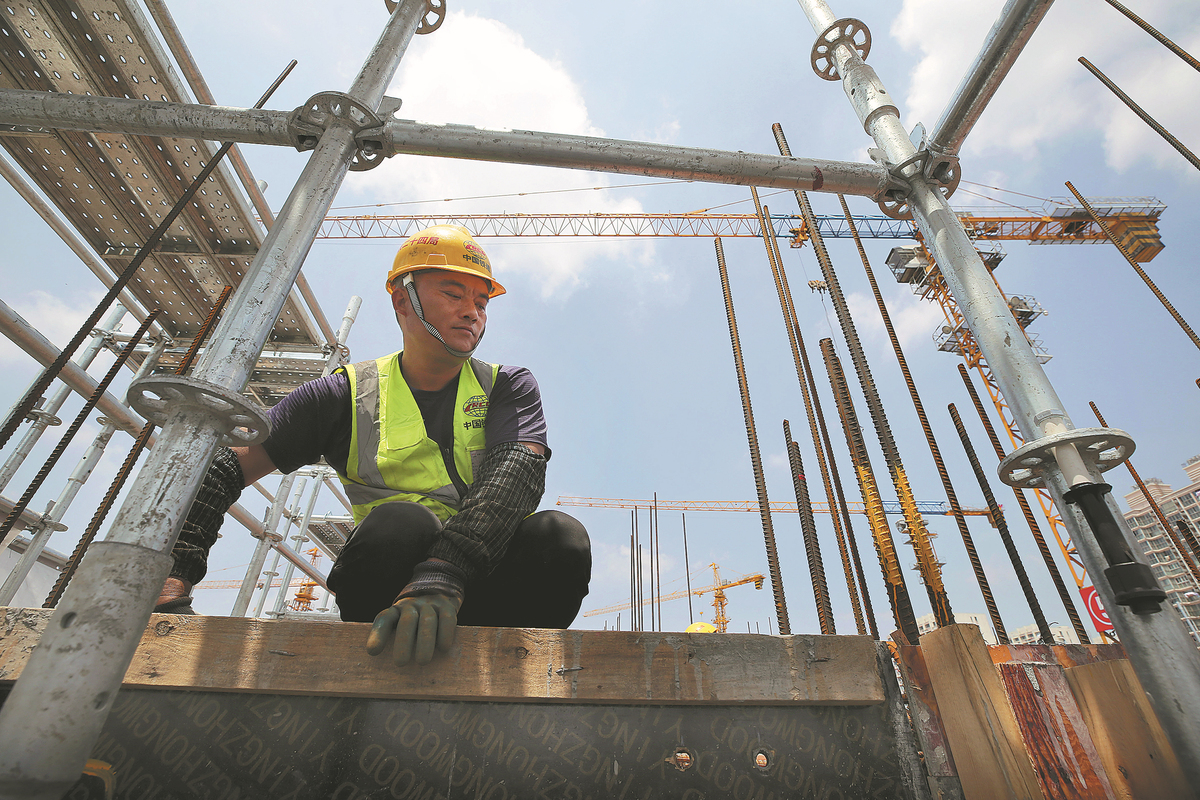
A worker seen at a housing redevelopment project at the Pengyi Community in Shanghai. FANG ZHE/ XINHUA
In some underdeveloped corners of cities, China's urbanization drive is receiving a shot in the arm from SOEs, which are sparing no effort to help promote livelihoods across the nation. For example, as the last concrete slab was placed on the capping beam of a residential building in Shanghai on Dec 16, the renovation project of an old urban residential community entered its new chapter.
With previous infrastructure facilities all in disrepair, Pengyi Community - one of the earliest groups of modern communities to rise in the metropolis in the 1950s and considered a "community of glory" as it was home to various industries' role models - is being redeveloped by China Railway 24th Bureau Group Corp, a unit of CRCC.
The state builder said in a construction progress report in December that capping work of all buildings has been completed, and the community will embrace its residents back before the next Spring Festival arrives.
The redevelopment project has a total construction area of 210,800 square meters. The completion of its capping work marks the solid foundation for future construction, the progress report said.
The project has been given significance since its construction began, as it matters a lot to livelihoods of a large number of resettling families. According to CR24, upon completion, it will provide about 2,242 housing units. Various supportive facilities, including underground parking lots, spaces for exercises and business areas, are also included in the redevelopment plan, effectively addressing urban residents' resettlement concerns.
To offer more residents living-friendly solutions and ensure smooth occupancy upon the completion of the residential complex, the project includes a wide range of construction tasks, including civil engineering, interior and exterior design, and the installation of water, electricity and heating systems, all of which present challenges during construction.
The project builders managed to achieve timely delivery at every step of the construction process through smooth coordination, optimized construction procedures and reasonable scheduling. They also employed new approaches to reduce on-site operations, thereby minimizing material waste and environmental impacts.
During an executive meeting in late July, the State Council, China's Cabinet, approved guidelines on transforming and upgrading underdeveloped areas in mega-cities to support the economy.
The transformation of such areas is a positive move to expand domestic demand and increase effective investment. Residential renovation often comes with a slew of supporting projects such as commerce, education, hospital and elderly care facilities, said Yang Weiyong, an associate professor of economics at the University of International Business and Economics.
"These renovation projects can not only meet demands at different levels and make up for imbalances in urban development, but also help expand domestic demand and optimize the current structure of the real estate sector," Yang said.
In January, China State Construction Engineering Corp, another state building major, finished redeveloping an old housing project in Beijing, in a community located in Huapichang Hutong.
"My new home has excellent lighting and ventilation now, and it is such a relief that finally there is an elevator in this building. My neighbors and I are all satisfied and extremely happy with our new house," said Jin Guilian, who has been living in the community for decades, and is now busy decorating her house for Spring Festival 2024.
With the nation's high-quality development progressing steadily, Tao's Peach Blossom Spring could well be acquiring dimensions of reality.
Photos
Related Stories
- China's SOEs log revenue growth in 2023
- Profits of China's central SOEs reach 2.6 trln yuan in 2023
- China's local SOEs witness business revenue growth in 2023
- SOE profits, share value prioritized
- Chinese vice premier emphasizes workplace safety, SOE reform
- China's central SOEs to accelerate development of new productive forces in 2024
Copyright © 2024 People's Daily Online. All Rights Reserved.






